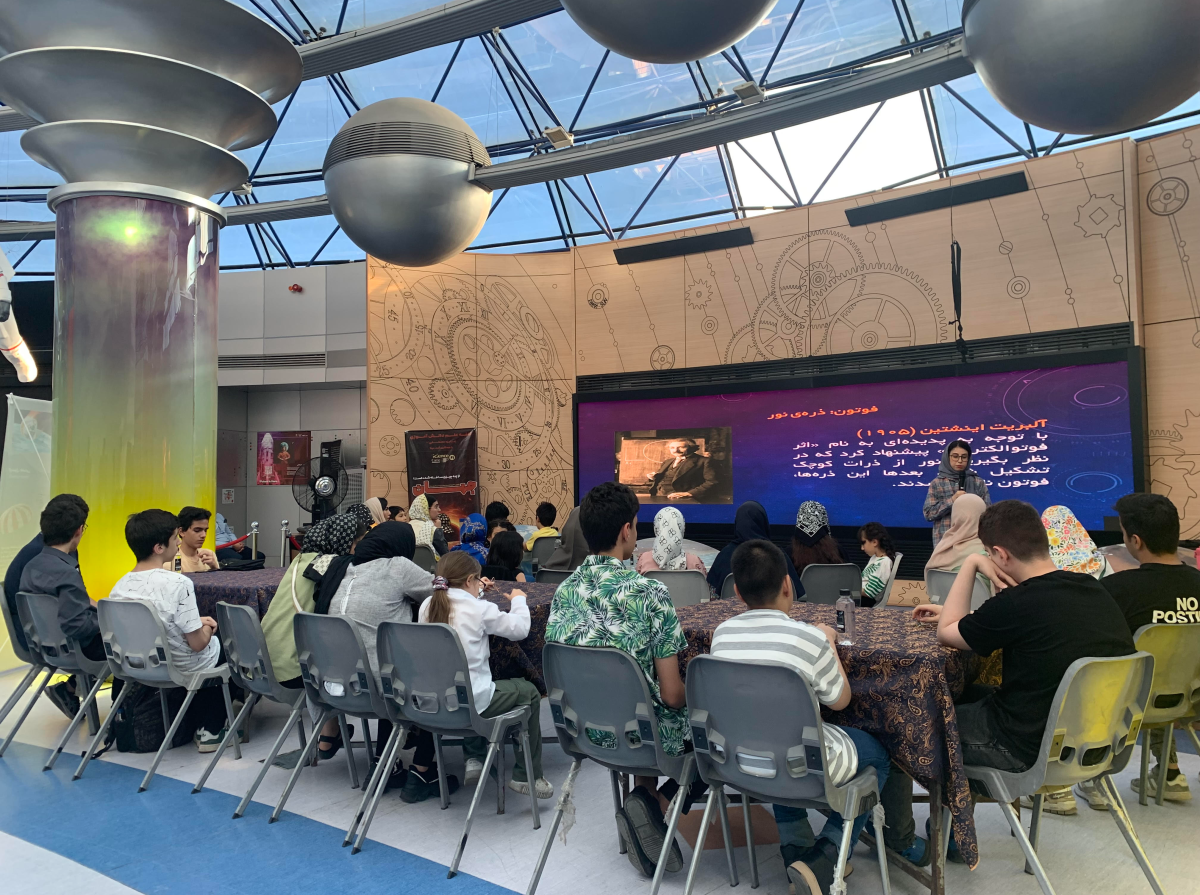Students do fun experiments to understand what forms world


The Mustafa(pbuh) Science and Technology Foundation (MSTF) held Science Cafe “What is the world made of?” for school students in a planetarium on July 21, 2024.
MSTF Media reports:
In order to familiarize school students with the theories of the 2021 Mustafa(pbuh) Prize laureate Cumrun Vafa, the 21st Science Cafe was held in Gonbad Mina planetarium, Tehran.
This science cafe was designed with the purpose of discussing an important question “What is the world made of” and possible answers to the question. For this purpose, a young science communicator, gave a simplified interactive presentation on this subject and engaged students in discussions.
She started her talk with displaying galaxies captured by James Webb Space Telescope, and asked the audience what they think about the tiniest particles that form the world.
She said although we do not have direct access to all parts of the universe, we try to understand different phenomena via the rules of math and physics.
Electron was discovered by J. J. Thomson in a laboratory first. Afterwards, Earnest Radford discovered Proton while doing an experiment in 1917. Neutron was the last particle that was discovered. James Chadwik discovered it when he was working on an experiment in 1932.
Next, she asked the students whether they think there are other particles in the universe or not. Two students hinted at the answer but were not sure.
The first antiparticle called positron was discovered by Carl Anderson in 1932, she continued. Photons, discovered by Einstein in 1905, are massless particles that form light. Another important particle was Higgs particle discovered in 2012. All these scientists were awarded the Nobel Prize for their discoveries.
She then introduced the table of standard model of elementary particles, specifically pointing to Quarks, Leptons, and Gauge Bosons. She said Gauge Bosons make it possible for other particles to communicate to each other, one of which is Photons.
The students asked questions while she was explaining the table, and were given some objects to do experiments with. Using 2 marble toys each, they found out how Photons change the position of some particles.
After explaining the particles present in the table at length, it was explained to the surprise of the students that the table of standard model of elementary particles forms only 5 percent of the universe, and that we do not know 95 percent of it yet. “Around 27 percent is called dark matter and around 68 percent is called dark energy. Dark matter is important because it keeps all the galaxies in place, and dark energy expands the universe,” she added.
Drawing attentions to the missing particle in the table of standard model of elementary particles, she pointed to Graviton and showed a real picture of a black hole. While on the subject of black holes, she delineated gravitational singularity in simple terms.
Next, using hair ties already given to the students in order to better visualize the concept, she showed how instead of considering particles as spots, we can consider them as strings which was a simplified introduction to the String Theory.
The problems with string theory were mentioned as well, one of the most important of which is that there is not enough evidence that they exist.
One of the students asked who discovered string theory, to which she answered: “It is just a theory now, we have no evidence for it as I said earlier. But from 1960 onwards, different physicists have worked on it. One of the most eminent figures among them is the physicist Cumrun Vafa.”
Following the question, a brief biography of Cumrun Vafa, a 2021 Mustafa(pbuh) Prize laureate and one of the pioneers of string theory and F theory was given to the audience.
Ultimately, the students were asked whether they think Standard model of elementary particles is better or string theory, to which they gave creative answers based on their understanding of the session. The presenter said: “To be honest, we do not know which one better explains the universe yet. And it is okay to say we still don’t know some matters in science.”
Cumrun Vafa is Hollis Professor of Mathematics and Natural Philosophy at Harvard University. In 2021, he was awarded the Mustafa(pbuh) Prize for his work “F-theory”.